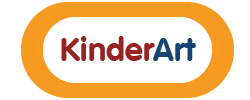How to Choose Toys for Toddlers?
How to Choose Toys for Toddlers?
Tips for Choosing Toys for Toddlers
Toddlers are little explorers who learn by doing. Play gives your child a great opportunity to develop and practice new skills at her own pace by following his/her unique interests. The toys and playthings your child has available to his/her can shape his/her development in important ways.

There is a huge variety of toys that have been developed for the toddler market. How do you choose which are right for your child? How can you tell which are high quality? Which will engage your child’s interest for more than a few days or weeks?
Below are some ideas for choosing toys that will grow with your child, challenge her, and nurture her overall development (her thinking, physical, language and social-emotional skills).
Guidelines for Choosing Toys for Toddlers
1. Choose toys that can be used in a variety of ways.
Toddlers love to take apart, put back together, pull out, put in, add on, and build up. Choose toys that are “open-ended” in the sense that your child can play many different games with them. For example, wooden blocks or chunky plastic interlocking blocks.
2. Look for toys that will grow with your child.
We all have had the experience of buying a toy that our child plays with for two days and never touches again. You can guard against that by looking for toys that can be fun at different developmental stages. For example, small plastic animals are fun for a young toddler who may make a shoebox house for them, while an older toddler can use them to act out a story she makes up.
- Examples: Plastic toy animals and action figures, toddler-friendly dollhouses, trains and dump trucks (and other vehicles), stuffed animals and dolls.
3. Select toys that encourage exploration and problem-solving.
Play gives children the chance to practice new skills over and over again. Toys that give kids a chance to figure something out on their own—or with a little coaching—build their logical thinking skills and help them become persistent problem-solvers.
- Examples: Puzzles, shape-sorters, blocks, nesting blocks or cups, art materials like Dough,clay, paint, crayons or play-dough.
4.Look for toys that spark your child’s imagination.
During your child’s third year, his creativity is really taking off as he is now able to take on the role of someone else (like a king) and imagine that something (like a block) is actually something else (like a piece of cake). Look for toys that your child can use as he develops and acts out stories. Pretend play builds language and literacy skills, problem-solving skills, and the ability to sequence (put events in a logical order).
- Examples: Dress-up clothing, blocks, toy food and plastic plates, action figures, stuffed animals and dolls, toddler-friendly dollhouses, toy tool. (Call an appliance store about picking up one of their refrigerator boxes). Boxes become houses, pirate ships, barns, tunnels—anything your child’s imagination can come up with!
5.Give your child the chance to play with “real” stuff—or toys that look like the real thing.
Your toddler is getting good at figuring out how objects in her world work—like television remotes or light switches. She is also interested in playing with your “real” stuff, like your cell phone, because she is eager to be big and capable like you. Toys like this help children problem-solve, learn spatial relations (how things fit together), and develop fine motor skills (use of the small muscles in the hands and fingers).
- Examples: Musical instruments, child-size brooms
6. Look for toys that nurture cross-generational play.
While adults and children can play almost anything together, there are some toys that are designed for adult participation. As your child approaches age 3 and beyond, early board games—that involve using one’s memory or simple board games that do not require reading—are fun for all ages to play. Consider starting a “family game night” when all of you play together. Board games encourage counting, matching, and memory skills, as well as listening skills and self-control (as children learn to follow the rules). They also nurture language and relationship-building skills. Another important benefit is teaching children to be gracious winners and how to cope with losing.
Common Questions on Choosing Toys for Toddlers
What are the benefits of sounds, lights, and music?
Many, many toys for toddlers are ablaze with buttons, levers, lights, music, etc. Often these toys are marketed as “developmental” because the toy has so many different functions. Unfortunately, this often has the opposite effect for the child. The more a toy does, the less your child has to do. If your child can sit and watch the toy “perform,” then it is likely more entertaining than educational. In addition, these toys can be confusing to a child who is learning cause-and-effect. If a toy randomly starts playing music, or it is unclear which button made the lights start flashing, then your child is not learning which of his actions (the cause) produced the lights and music (the effect). In short, the most useful toys are those that require the most action on the part of a young child. The more children have to use their minds and bodies to make something work, the more they learn.
Can toys actually “make my baby smarter,” as the packaging and advertisements often claim?
Proceed with caution. Most products that make these claims have not been proven to increase children’s intelligence. In fact, safe household items (plastic bowls for filling and dumping, pillows for climbing and piling up to make a cave, old clothing for dress-up) are often the best learning tools. Remember, the more your child has to use her mind and body to problem solve and develop her own ideas, the more she learns.
